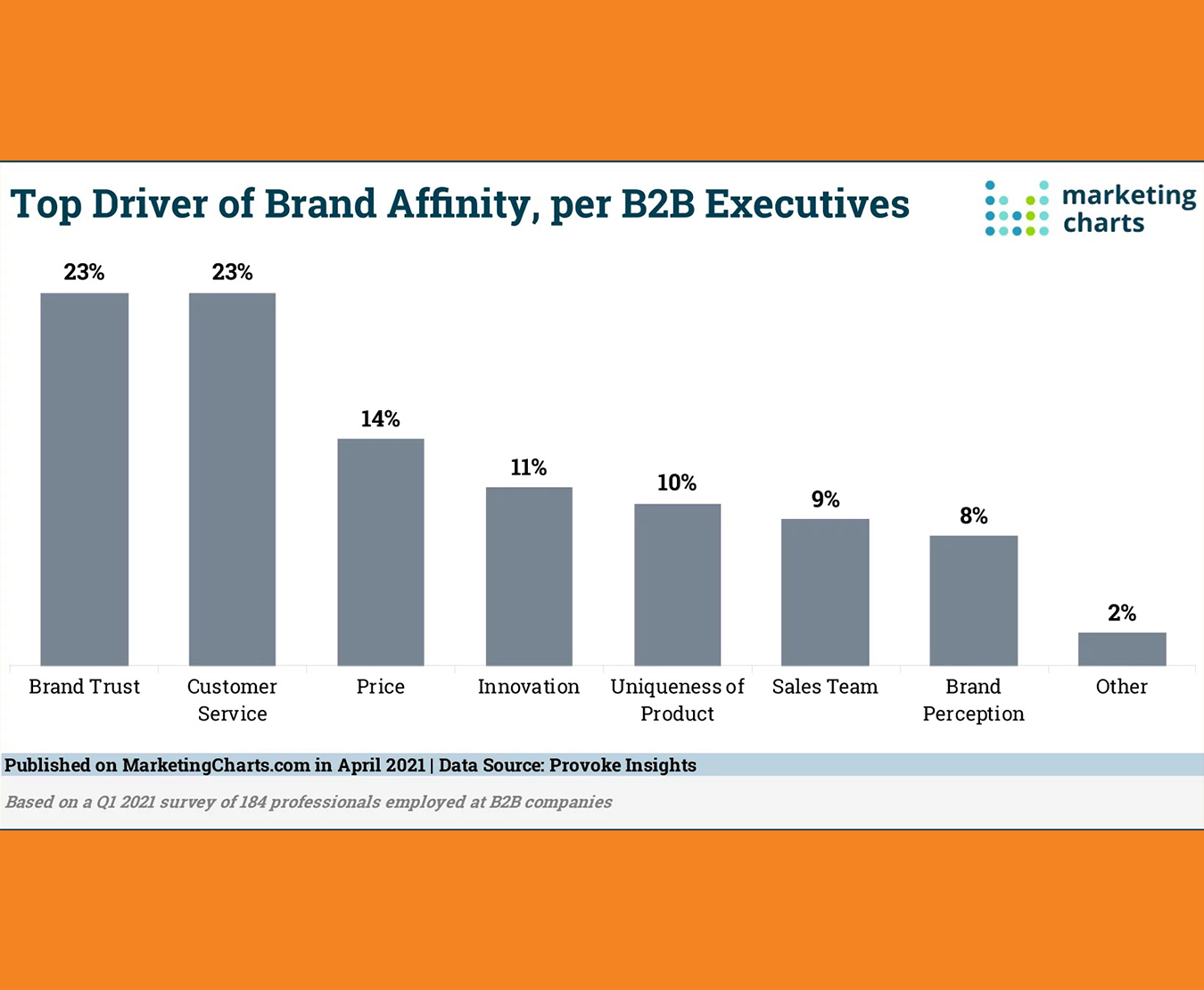

Advice to narrowly focus your B2B marketing has become outdated. Broader is better according to the latest data-driven B2B market segmentation recommendations. This is because B2B buyers behave more and more like B2C shoppers online.
Historically, broad targeting applied only to B2C marketing. Now, though, with buyers changing their online behaviors, B2B marketers stand to gain by expanding their target audience.
B2B companies have long been told to find a gap in the marketplace and fill it with your goods and services. Owning a niche market made sense when B2B buyers had fewer options to consider.
Now, with globalized online buying, research shows going big and broad with your target market will help your small or mid-sized business (SMB) grow faster.
One reason you want to focus your marketing at every possible B2B customer is that your customers are focusing on every possible supplier.
Analysis of B2B customer migrations show that all companies in a particular industry compete with the biggest companies in that market.
I realize that the new competitive landscape may make you uneasy. But it’s not all bad news!
B2B customer mobility moves in both directions: customers moving from smaller companies to larger companies and from larger companies to smaller companies.
Market segmentation still matters. Just avoid overly restrictive segmentation and go after all reasonable customers in your market.
Still, you’ll want to segment your target market to deliver the most relevant content messaging to buyers in each segment.
We recommend segmenting based on the following:
Where market segments overlap in answering these questions, consider combining them for greater efficiency.
Beware of going so broad with your target market that you no longer know your audience. Buyer personas still apply even when you widen the lens of your target market focus.
Stick to solving your buyers’ problems and showing them your value. Meet them with meaningful content every step of their journey.
Even though B2B market segmentation recommendations have changed, it doesn’t mean you should try to be everything to everyone.
As shown in the graph above, the top drivers of B2B customer loyalty are brand trust and customer service. Notice that price was nowhere near as important as brand trust!
Now may be a good time to take another look at your brand positioning, but it’s not a time to abandon it altogether. If you marketed yourself to a niche market, step back, zoom out for a new perspective, and rebrand to include more potential customers.
The reality is, you and every other company that sells what you sell are competing for the same pool of customers. Why not reach out to all of them?
Those are my thoughts on B2B targeting for faster growth. What are your thoughts? Connect with us on LinkedIn or Tweet us. We’re always happy to talk.
—parin
Managing Partner
Image source: MarketingCharts
With over two decades of experience, Parin leads an expert demand-generation agency, StratMg, that helps industrial manufacturing clients achieve unambiguous and quantified organic sales growth across the US, EMEA & APAC.
Parin has built & positioned StratMg to be a value-added marketing services provider that strives to create a culture of quantified sales-driven marketing initiatives leading to sustained business growth through channel management, diversification, new customer acquisition and retention strategies and tactical execution.